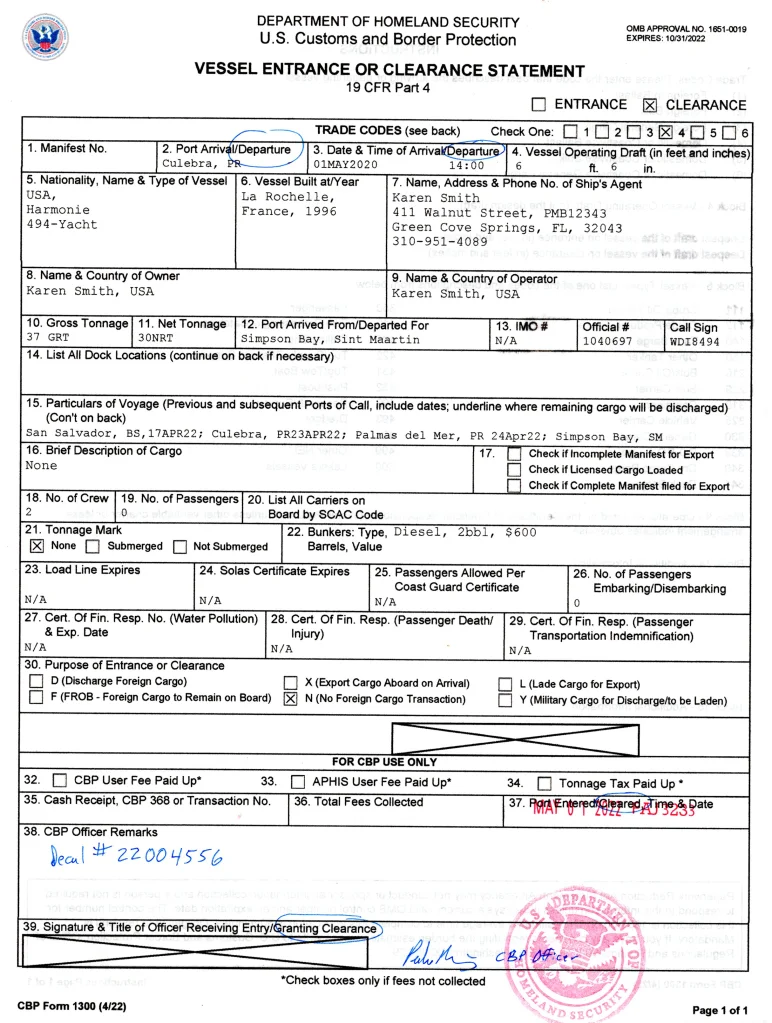Important: All the procedures described in here are valid for USA flagged boats, with all crew members holding US passports. Other situations might very well have different requirements.
Most countries in the world keep track of who crosses their borders, both coming and going. When a vessel “clears out” of a country, they are issued a document that is informally known as a “zarpe” (from Spanish for “set sail”). Most countries want to see this zarpe from your last country to be sure you are not running from something and therefore an “undesirable.”
The USA has never been very interested in keeping track of who leaves. Recreational vessels leave the USA every day with no paperwork at all. If they are going to neighboring countries who are familiar to this odd quirk of the USA (like Canada, Mexico, or the Bahamas) it’s not an issue. Officials in these countries don’t expect to see a zarpe from the USA. Further afield, it gets more difficult.
Many of the Caribbean countries now insist on seeing a zarpe from the USA if you arrived directly from a USA port. The official line is that they will turn you away if you do not have it, but in practice, I do not know of a case where that has happened. They can make your clearing in process long, slow, and painful however! Some countries will asses significant fines against vessels arriving without a zarpe.
The USA has gradually worked out the bugs in their online check in process for private vessels and it is now pretty painless. Fill out the form on the CBP ROAM app, maybe a short phone conversation, and usually that’s about it. The process to check out is not as clear cut, and certainly not as convenient. It must be done in person at a CBP office. Seaports, airports, are usually the places to look. Call ahead, they can work odd hours.
To clear out of the USA you will need to get a copy of form CBP-1300, and fill it out. I assume that you could just show up and get a copy of this, but having it pre-done makes everybody’s lives easier. This form is definitely a square peg in a round hole because it is designed for large commercial ships. Some of the boxes on the form will make no sense. Leave them blank and let the officer doing the clearance ask for the information he might need in a way you can understand. You then need to take that form to the nearest CBP office, and get it approved and stamped. You will also need to present passports for everyone aboard, and the vessel’s CBP decal number.
This gets a bit worse, because many CBP officers will not have seen this form used this way. Immigration and Customs law in the USA is only rivaled by the tax code for complexity and opaqueness. Nobody–even their own senior staff–knows it all, and in many seaports and airports outbound clearance of recreational vessels is not something they see very often. It should go without saying that patience, humor, and good manners will get you further than confrontation and frustration.
Once complete, you will have your own copy of the completed CBP1300 with a stamp. Immigration and Customs officials the world over LOVE their stamps. This is now your zarpe that you can present at your next port of call showing you left the USA legally with no charges pending.

A couple of things to be aware of on the form:
Box 10 and 11: These come off your documentation form. They have nothing to do with the actual weight of anything. Just copy the numbers.
Box 16: You have no cargo. Ship’s stores (i.e., provisions) are not “cargo.”
Box 19: Unless you are licensed to carry passengers for hire, this is ALWAYS zero. Everybody onboard is “crew.”
Box 22: “Bunker” is engine fuel and a “barrel” is 52 gallons. I doubt anybody cares about these for us, but here you go…

Thanks for the info, good to know and I will use it!
LikeLike